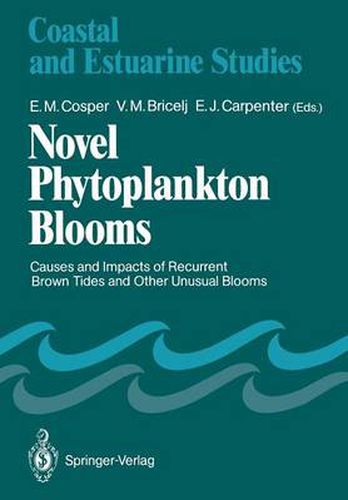Readings Newsletter
Become a Readings Member to make your shopping experience even easier.
Sign in or sign up for free!
You’re not far away from qualifying for FREE standard shipping within Australia
You’ve qualified for FREE standard shipping within Australia
The cart is loading…






This title is printed to order. This book may have been self-published. If so, we cannot guarantee the quality of the content. In the main most books will have gone through the editing process however some may not. We therefore suggest that you be aware of this before ordering this book. If in doubt check either the author or publisher’s details as we are unable to accept any returns unless they are faulty. Please contact us if you have any questions.
A massive phytoplankton bloom, locally termed brown tide , suddenly appeared in Long Island marine bays in 1985, colored the water a dark brown, decimated eelgrass beds and caused catastrophic starvation and recruitment failure of commercially important bay scallop populations. These brown tide blooms, caused by a very small, previously undescribed chrysophyte alga, have directly affected the estuarine environments of three northeastern American states: Rhode Island, New York and New Jersey. other phytoplankton blooms such as red tides caused by dinoflagellates and green tides from chlorophytes as well as blue-green algae blooms have long been recognized and studied world wide, however, the unusual nature of these brown tide blooms caught the interest of many people. Scientists were particularly intrigued by the discovery of a previously unknown microalga which provided the opportunity to learn more about small microalgae, picoplankters, which are usually ignored due to the difficulty in identifying species. A symposium entitled, Novel Phytoplankton Blooms: Causes and Impacts of Recurrent Brown Tides and Other Unusual Blooms , was convened on October 27 and 28 at the State University of New York at Stony Brook on Long Island, with 220 registrants and nearly 50 scientific papers presented by researchers from the united States as well as Europe. The conference documented unusual bloom occurrences of recent and past years on a worldwide basis as well as northeast regional recurrences of the previously unknown brown tide blooms.
$9.00 standard shipping within Australia
FREE standard shipping within Australia for orders over $100.00
Express & International shipping calculated at checkout
Stock availability can be subject to change without notice. We recommend calling the shop or contacting our online team to check availability of low stock items. Please see our Shopping Online page for more details.
This title is printed to order. This book may have been self-published. If so, we cannot guarantee the quality of the content. In the main most books will have gone through the editing process however some may not. We therefore suggest that you be aware of this before ordering this book. If in doubt check either the author or publisher’s details as we are unable to accept any returns unless they are faulty. Please contact us if you have any questions.
A massive phytoplankton bloom, locally termed brown tide , suddenly appeared in Long Island marine bays in 1985, colored the water a dark brown, decimated eelgrass beds and caused catastrophic starvation and recruitment failure of commercially important bay scallop populations. These brown tide blooms, caused by a very small, previously undescribed chrysophyte alga, have directly affected the estuarine environments of three northeastern American states: Rhode Island, New York and New Jersey. other phytoplankton blooms such as red tides caused by dinoflagellates and green tides from chlorophytes as well as blue-green algae blooms have long been recognized and studied world wide, however, the unusual nature of these brown tide blooms caught the interest of many people. Scientists were particularly intrigued by the discovery of a previously unknown microalga which provided the opportunity to learn more about small microalgae, picoplankters, which are usually ignored due to the difficulty in identifying species. A symposium entitled, Novel Phytoplankton Blooms: Causes and Impacts of Recurrent Brown Tides and Other Unusual Blooms , was convened on October 27 and 28 at the State University of New York at Stony Brook on Long Island, with 220 registrants and nearly 50 scientific papers presented by researchers from the united States as well as Europe. The conference documented unusual bloom occurrences of recent and past years on a worldwide basis as well as northeast regional recurrences of the previously unknown brown tide blooms.